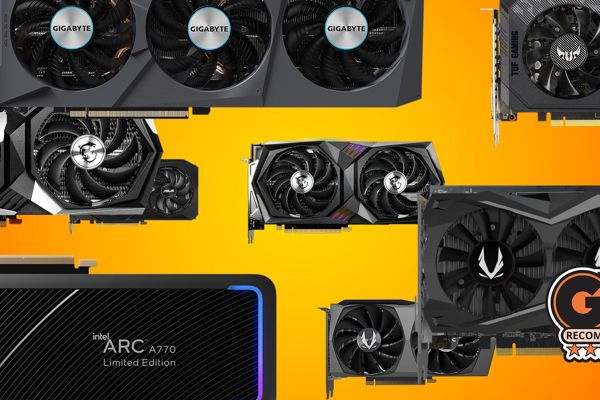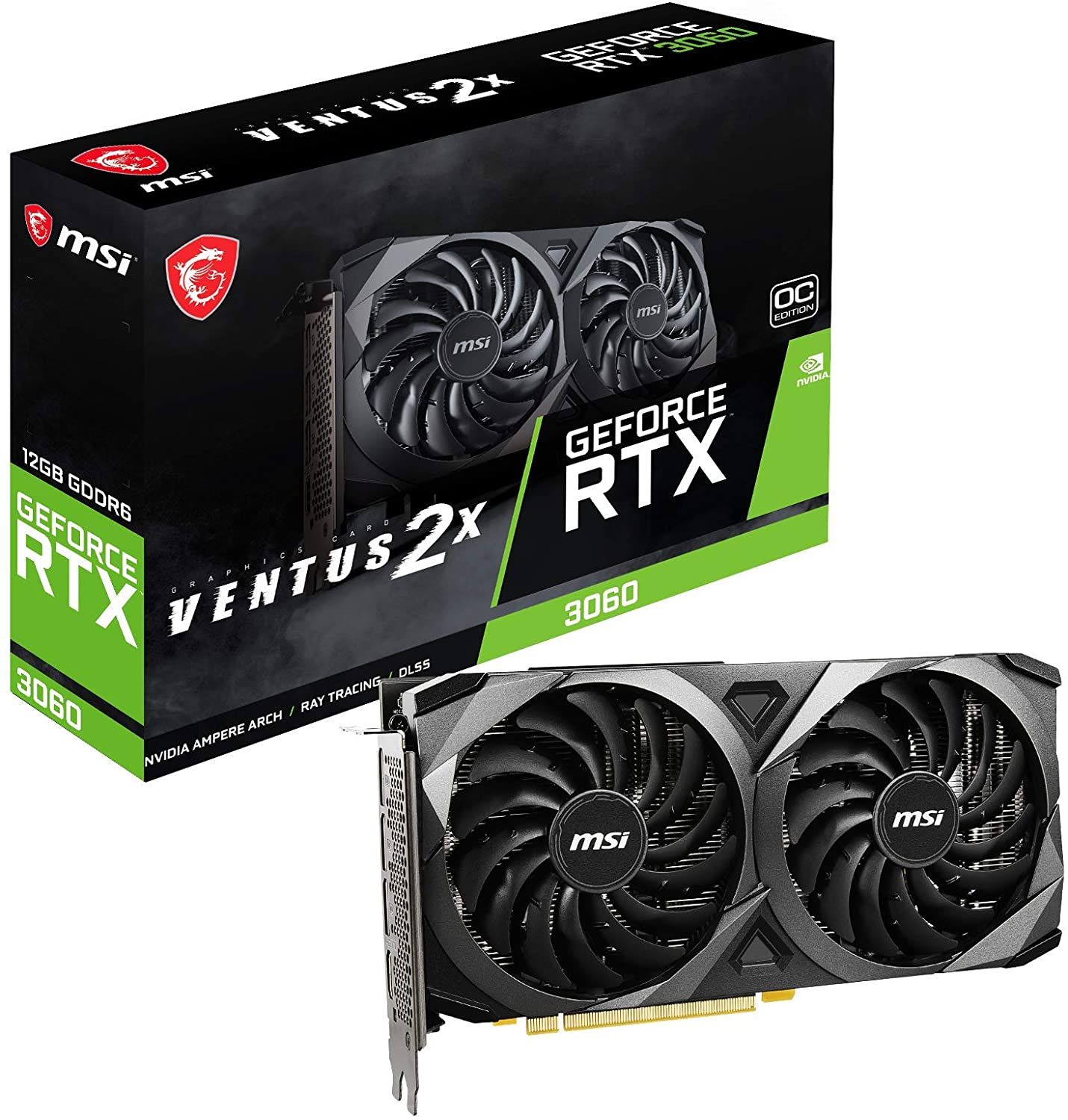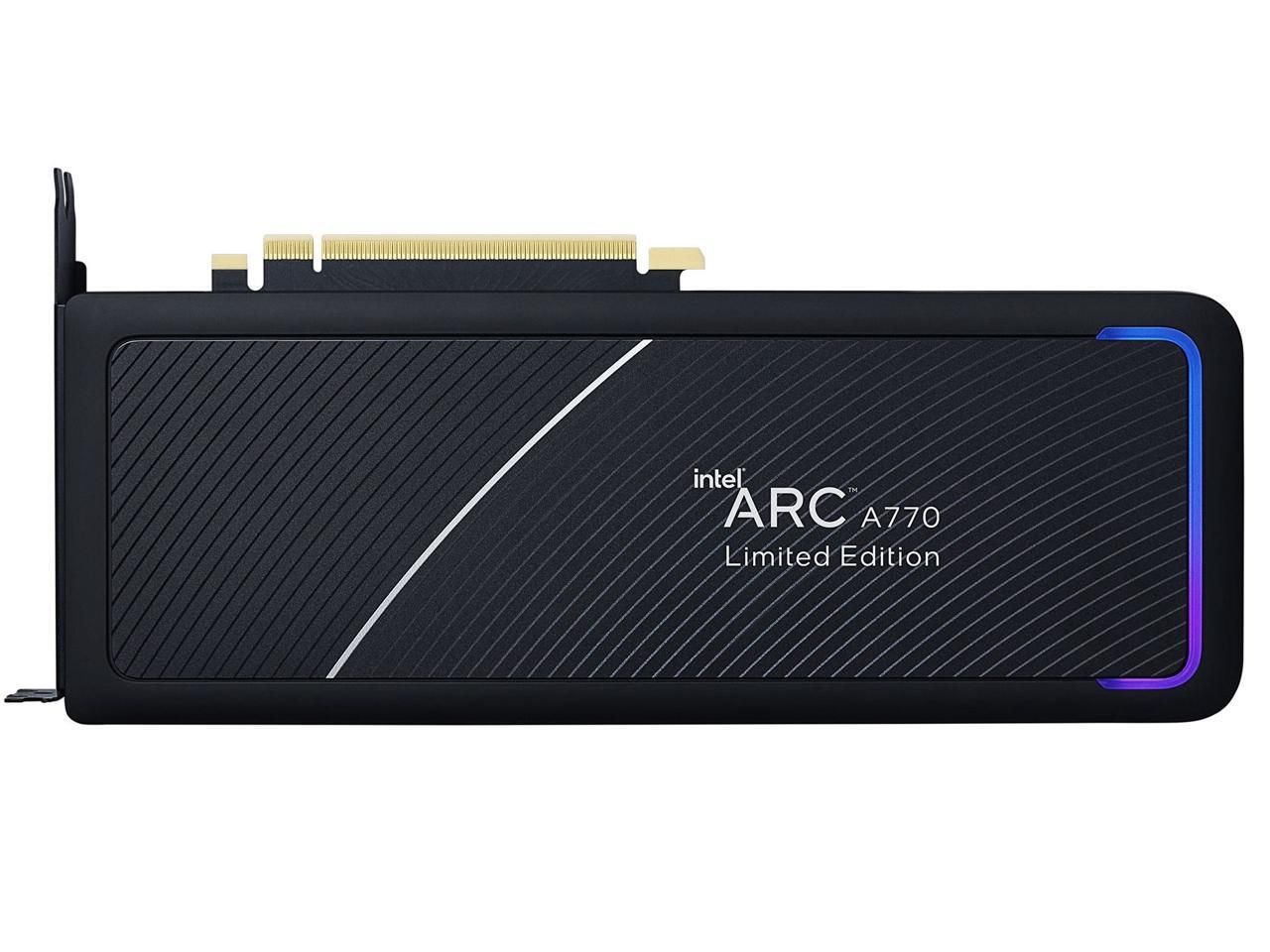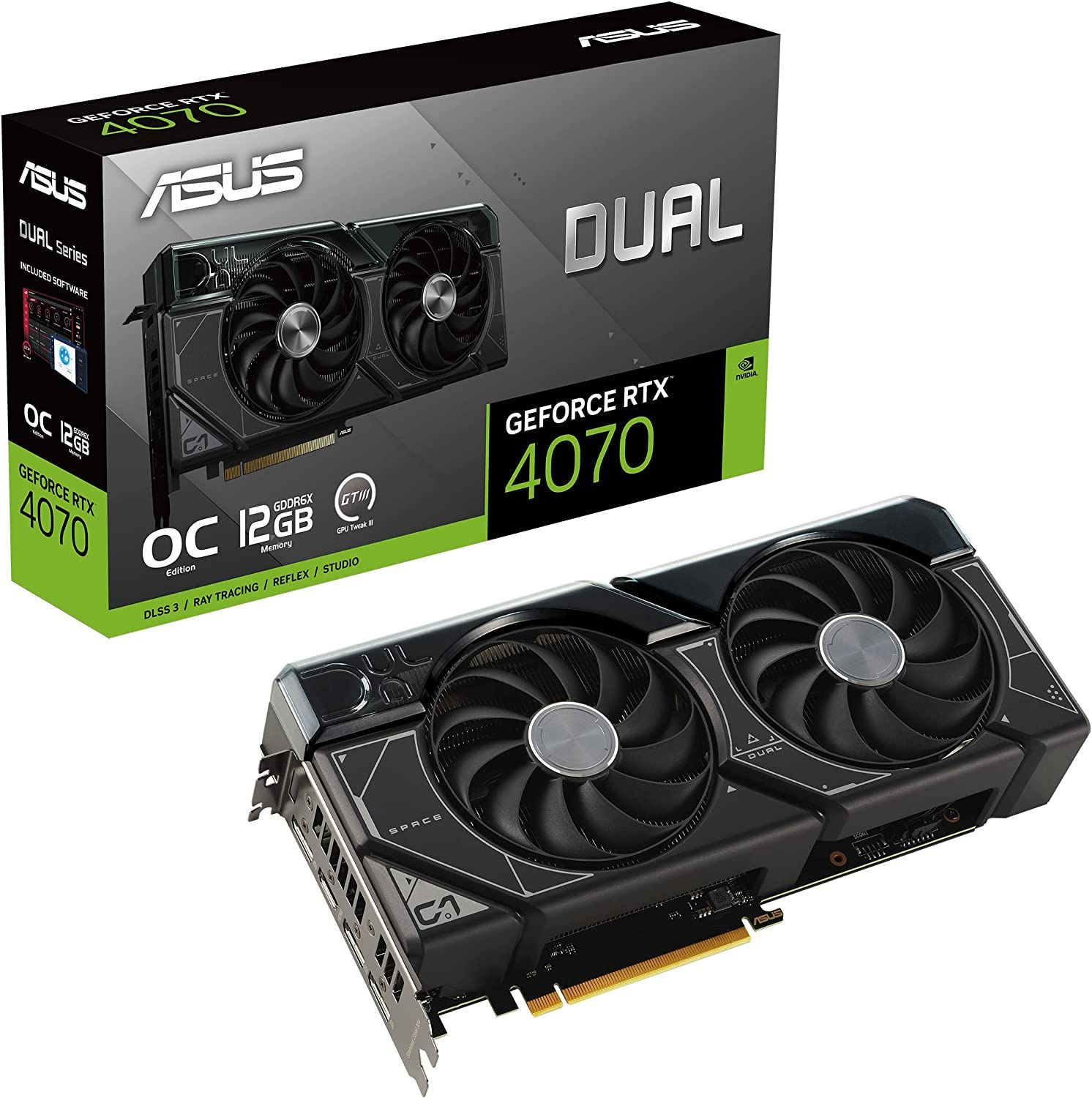
Top Affordable Graphics Cards for 2023

Discover the top affordable graphics cards of 2023! Our list features the best entry to mid-range options on the market, including refurbished units that offer unbeatable value Find the perfect budget GPU for your needs and upgrade your gaming experience today
As the market becomes flooded with increasing amounts of used and refurbished units, we are seeing a rise in more competitive entry-level to mid-range hardware. This trend is fueled by prices moving closer to MSRP for multiple SKUs, as well as the emergence of Nvidia's RTX 4000 series and AMD's limited RX 7000 series offerings.
The three major players in the market are NVIDIA, AMD, and Intel, with the first two competing at various price points. Intel, on the other hand, has focused mainly on the mid-range segment with its ARC product releases aimed at disrupting the sub $300-500 market.
To ensure fair comparisons and define what "budget" means, we will be looking at GPUs that range from ~$200 to $700. This range caters to the majority of our audience's needs, with regular updates to keep up with the latest market trends.
ASRock Challenger D Radeon RX 6700 XT is the perfect mid-range GPU for gamers on a budget. It provides fantastic performance for 1080P and 1440P gamers, and it can handle most modern games at a respectable frame rate. At a price point where it beats Nvidia's RTX 3060/3060TI offerings, it's an excellent choice for those looking to save some money. While it does offer Ray Tracing, its performance overhead is considerably higher than Nvidia's 2nd and 3rd gen RT-core enabled RTX 3000 and 4000 GPUs, which are typically at least a generation ahead of the 6700XT's implementation. For those on a budget, the ASRock Challenger D Radeon RX 6700 XT is an excellent choice that won't break the bank.
The ASRock Challenger D Radeon RX 6700 XT is a mid-range GPU that comes with a Navi 22 chip and an impressive 12GB of GDDR6 memory. It competes with Nvidia's RTX 3060 and 3060TI and has a minor pricing edge. The GPU has excellent rasterization performance and even beats the higher-priced RTX 3060TI comprehensively. While it initially had underwhelming Ray Tracing performance compared to Nvidia and Intel offerings, AMD's successive driver updates have improved the card's performance. The RX 6700XT is based on an RDNA 2-based core that is manufactured on a 7nm process, which is the same architecture used in the Xbox Series S, Series X, and PS5. This makes it a beneficiary down the line of developer implementation of select AMD technologies on said consoles being ported to PCs down the line. The GPU is relatively power-efficient compared to comparable last-gen GPU alternatives. However, it has limited driver support from AMD, which was a bit of a disappointment when the RX 7000 series launched, but has since been rectified. The GPU is available for purchase at $340 at Newegg and $399 USD at Amazon.
The RX 6700XT falls short in terms of Ray Tracing performance and its implementation of AMD FidelityFX, which, while helpful, isn't quite up to par with Nvidia's more mature solution. However, at its price point, the RX 6700XT offers a winning combination of value, performance, and features that is hard to beat, making it our top pick for the best budget GPU. On the other hand, the Intel Arc A750 Limited Edition 8GB Graphics Card is an excellent option for those seeking an entry-level budget GPU. Priced competitively against AMD and Nvidia's lower-end offerings, the dual-slot GPU delivers impressive performance without breaking the bank.
The Intel Arc A750 Limited Edition 8GB Graphics Card is a formidable contender in the discrete GPU market, surpassing both Nvidia's RTX 3050 and AMD's RX 6600 in raw performance tests while maintaining a sleek, understated design. Its aggressive pricing makes it an attractive option for consumers seeking a budget purchase. However, the ARC lineup's drivers are still new and may result in unsteady performance on older titles compared to its more experienced competitors. Additionally, the GPU's relatively high idle power draw may hinder its efficiency compared to other mobile and discrete options. Despite these drawbacks, Intel's efforts in the entry-level and midrange markets show promise for future integrated GPU solutions within its CPU offerings.
The A750 holds its own against its competitors and we expect support to improve over time. Unless power draw is a core concern for your purchase, the A750 is a solid choice for an entry-level budget GPU.
On the other hand, the MSI GeForce RTX™ 3060 VENTUS 2X 12G OC is a midrange GPU that offers excellent value for its price. It boasts plenty of CUDA Cores, respectable gaming benchmarks, and ample GDDR6 memory, making it the best-selling GPU on both Amazon and Newegg for April 2023. This GPU is the perfect choice for mainstream consumers who want to game at Full HD and 2K resolutions with respectable frame rates in games.
The MSI GeForce RTX™ 3060 VENTUS 2X 12G OC is an exceptional AIB variant of the RTX 3060, offering better value than the stock SKU. With 12GB of onboard GDDR6 memory, it meets the more stringent memory requirements necessary for modern games. It also boasts decent ray tracing performance, making it an ideal choice for gamers looking for a GPU that can handle 1080P and, to a lesser extent, 1440P gaming without breaking the bank.
While the RTX 3060 does not offer the same rasterization performance as AMD's competing RX 6700XT, it does provide better ray tracing performance. Additionally, it utilizes DLSS technology, making it more future-proof than other similarly priced competitors. However, some may find the price point to be a bit too close to the RTX 3060TI, while AMD's RX 6700XT is both cheaper and faster in general. The MSI GeForce RTX™ 3060 VENTUS 2X 12G OC is currently priced at $360 on Amazon and $359.99 on Newegg.
Gigabyte Radeon RX 6600 Eagle 8G is a mid-range graphics card from the popular Radeon RX 6000 series, built with AMD RDNA 2 architecture and 8 gigabytes of GDDR6 memory with a 128-bit memory interface. It features Gigabyte's Windforce 3X cooling solution that includes three alternate spinning fans for optimal airflow and supports multiple high-resolution monitors with two DisplayPort connectors and two HDMIs. This GPU is a well-priced option for gamers looking for a budget contender, and it comes bundled with the free AMD The Last of Us bundle for PC at select retailers. It's also a low power consuming upgrade, which means most PCs won't require a PSU upgrade to run it. However, the larger profile of this card may be an issue for users with smaller cases. Additionally, the recent handling of the RX 6000 series driver updates by AMD left a lot to be desired, which warrants mentioning given the issues gamers faced during that time with newer titles. Finally, the Ray Tracing Performance of this card is lacking.
The Gigabyte Radeon RX 6600 Eagle 8G Graphics Card boasts an impressive cooling system and a design that complements its powerful chip. While it may not be the most high-performing GPU on the market, it is still a solid option for its price point and target resolution of 1080P. However, it does struggle with Ray Traced content, an issue that is currently prevalent with AMD hardware.
One of the benefits of the RX 6600 is its energy efficiency, which allows it to run on most computers without the need for a dedicated PSU purchase. The Gigabyte version of the card may feel somewhat over-engineered, but this is not necessarily a drawback, particularly for those who prioritize effective cooling. That being said, users seeking a more budget-friendly and compact option may prefer XFX's smaller form-factor SKU, which performs similarly albeit at a slightly higher price point.
Featuring impressive VRAM and a budget-friendly price point, the Intel Arc A770 Limited Edition is a strong contender for those seeking a quality budget Intel GPU.
The Intel Arc A770 Limited Edition is a promising addition to Intel's first dedicated graphics cards. It boasts a great price-to-performance ratio and outperforms entry-level AMD GPUs in terms of RT performance. In fact, it even goes head-to-head with Nvidia's RTX 3060 GPU in most benchmarks. At a price point that is hard to beat, it offers 16GB of memory, making it an easy upgrade for gamers who enjoy high-resolution gaming. Its sleek and futuristic design, coupled with subtle RGB lighting, makes it more aesthetically pleasing than any other stock unit. However, it does have some drawbacks. Its idle power consumption is comparatively high, and driver support is an ongoing endeavor for Intel. The company is working to deliver more stable performance across the ARC lineup. It's also important to note that the Intel Arc A770 requires PCI-E 4.0 slots and resizable BAR support to ensure optimal performance. Despite these limitations, the Intel Arc A770 is a solid first attempt by the CPU juggernaut to capture the mid-range GPU market.
The Arc A770 boasts impressive Ray Tracing performance with its 16GB of GDDR6 memory, making it stand out in a market filled with 8GB and 12GB SKUs. It also offers superior DX12 compatibility and support for current and upcoming titles, although it may struggle with last-gen titles. To achieve this, Intel has implemented PCI-E 4.0 and Resizeable Bar, which allows for faster performance in various tasks and applications, especially in gaming. While the Arc A770 is an excellent upgrade for current-gen PCs, it may not be suitable for older hardware, such as an outdated motherboard. If you're in the market for a more budget-friendly option, there are third-party SKUs available that may be worth considering.
ASUS Dual GeForce RTX 4070 OC Edition: The Best Premium Budget GPU for Pushing Budgets and Performance Tiers.
The ASUS Dual GeForce RTX 4070 OC Edition boasts a Dual Fan Air-Cooled cooling method and a GPU speed of 1920 MHz. With 12GB GDDR6X memory and a power consumption of 205W, this graphics card offers higher boost clocks than stock units out of the box. Additionally, it delivers excellent silent performance under load and has better cooling performance than the stock RTX 4070, despite sharing the same MSRP.
While the card offers excellent Ray Tracing and DLSS 3.0 performance, its rasterization performance is close to that of an RTX 3080 in raw terms. Furthermore, it doesn't offer the same performance jump that the RTX 3000 series did on a comparable price tier last generation. It's also worth noting that this graphics card lacks displayport 2.0 support, unlike AMD alternatives in the 7000 series.
At a relatively high $600 price tag, the ASUS Dual GeForce RTX 4070 OC Edition is an excellent choice for those looking for an ultimate 1440P GPU with solid DLSS 3.0 and better Ray Tracing performance. Although Nvidia prices GPUs aggressively this generation, this graphics card offers great value for those looking for an excellent high-end GPU at the sub $600 mark. However, if you already have an RTX 3070 or up, it may not be a value upgrade unless you plan to max out RT or DLSS 3.0 performance with rasterization gains at a minimum at a similar price point as the RTX 3080.
The RTX 4070 is a powerful GPU that offers smooth gameplay, thanks to Nvidia's frame-gen technology in DLSS 3.0 and exceptional Ray Tracing (RT) performance. Gamers can rely on this capable graphics card to deliver an excellent gaming experience. As for the frequently asked question, the lifespan of cheap graphics cards may vary depending on usage and maintenance.
To ensure a long-lasting GPU, it's important to prioritize build quality over price. A well-built, inexpensive GPU can outlast a poorly-manufactured, high-end GPU. While a GPU should ideally last beyond its service warranty, factors such as wear and tear, usage, and location can affect its longevity.
When selecting a cheap graphics card, consider future performance needs. Older GPUs can sometimes offer better performance than newer options, but may have limited warranties or be used. It's important to find a GPU with sufficient VRAM and performance for your target resolution and budget. Additionally, take into account your display's maximum resolution and refresh rate to make an informed decision.









